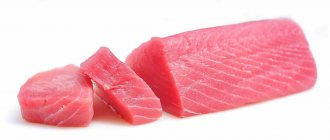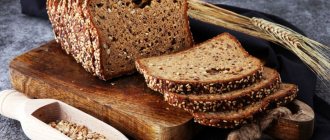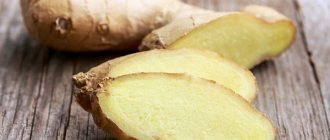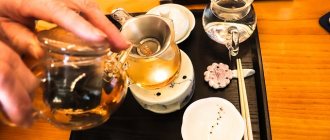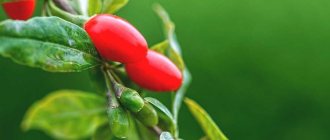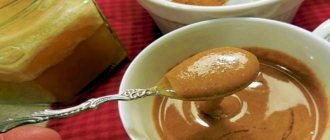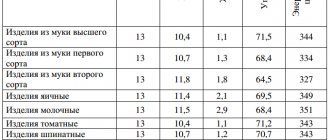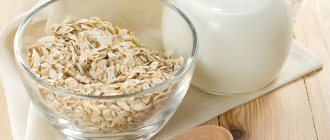The history of Tibetan herbalism is as long as the history of Tibet. Local traditional medicine has been developing for more than 2000 years. Herbalism combines scientific knowledge and spirituality. The origins of the medicine lie in ancient China and India. The Tibetans collected the most effective elements to create the “elixir of youth” - a natural drink that can strengthen and cleanse the body.
Today Tibetan tea is gaining popularity among us. The recipe is based on the concept of “nyepa” - these are 3 components that must be in balance. Disequilibrium causes disease. The collection uses the concepts “lung” (wind), “tri” (bile), and “badkan” (mucus). The effect of the drink is aimed at eliminating the imbalance of these components in the body. In this article I will tell you how to brew Tibetan herbal tea correctly, whether it can rejuvenate and what contraindications it has for use.
Traditional Tibetan tea with milk, butter and salt - Chasuima
Mountainous areas have a harsh climate and difficult living conditions, so it is extremely important for Tibetans to maintain their strength. This is how Tibetan salted tea made with butter and milk was created. This drink is distinguished not only by its high nutritional and energy value, but also by the beneficial properties of the tea leaf.
How to cook
There are many recipes for traditional Tibetan tea, including both classic versions and more modern methods. The fact is that for an old recipe it is not always possible to get the necessary ingredients, but they can be successfully replaced with more familiar ingredients. In any case, it is important to follow the sequence of actions. For classic Tibetan tea you will need:
- 75 grams of black (Shu) or green (Shen) pu-erh;
- 1 tsp. salt;
- 6 glasses of yak milk;
- 1 cup yak ghee.
Tea is prepared as follows:
- Take a cauldron or other container with thick walls, pour milk into it and put it on the fire.
- After the milk boils, you need to put in the pu-erh and cook over low heat for at least half an hour, remembering to stir the milk.
- Remove tea from heat, strain, add butter and salt. The resulting drink must be shaken well. In Tibet, special utensils were traditionally used, but nowadays a regular mixer is suitable for this.
The finished tea should have a uniform thick consistency and be more like a cocktail. It is poured into mugs and drunk.
Of course, in our realities, yak butter and milk can be replaced with cow's milk; it is only important to choose products with a high percentage of fat content. In addition, some recipes take classic loose-leaf tea, which is brewed with water in the usual way, after which the remaining ingredients are added and everything is mixed in a mixer.
Beneficial features
The tea leaf invigorates, tones, and promotes comprehensive strengthening of the body. Milk and butter contain large amounts of protein and fat, which creates a long-lasting feeling of fullness.
Are there any contraindications
There are some general contraindications to drinking salted Tibetan tea. First of all, these include individual intolerance to components and gastrointestinal diseases. In addition, it is not recommended to drink this tea during pregnancy and lactation, as well as for children under 18 years of age.
If any discomfort or side effects occur, you should immediately stop taking the tea.
History of the Silk Road of Tibet and Pu-erh tea
Initially, tea in Tibet was a drink of Buddhist lamas and aristocrats. But gradually, by the end of the Tang Dynasty (618 - 907 AD), tea, which we today call pu-erh, became an indispensable drink in the diet of ordinary Tibetans.
The extreme altitude of the Himalayan mountains and the harsh temperature of Tibet did not allow the production of subtropical tea, the most important element of the Tibetan ethnic group. The import of tea stimulated the creation of a network of caravan routes, collectively known as the "Southwestern Silk Road" (Xi'nan Sichouzhilu) or "Tea Horse" (Chama Dao). Beginning in the 7th century, caravan routes through the forests and mountains of the Chinese province of Yunnan to Tibet, Nepal, India and Burma.
The Southwestern Silk Road became the most important trade artery of the ancient world, and was the driver of cross-cultural exchange and contributed to the establishment of a tea culture among the ethnic groups of the Silk Road. Along the trade route (from 2-4 thousand km), the tea leaf was fermented and interacted with temperature fluctuations, humidity and microorganisms. It was thanks to the caravan route of Cha Ma Dao that pu-erh arose, which, during 6-10 months of transportation, acquired an amazing aroma, taste and unique health-promoting properties of fermented pu-erh tea.
Pu'er
Pu-erh tea is produced from a broadleaf variety of the tea plant (Camellia sinensis var. Assamica) native to the Upper Mekong region. This area is the birthplace of the tea plant and covers the Yunnan province and neighboring terroirs of the countries (Laos, Vietnam, Myanmar and India) bordering China.
Numerous local ethnic groups in tea-growing areas have produced and consumed pu-erh for centuries as a tonic and longevity drink. These sociolinguistic groups include the Bulang (Blang), Wa, Akha (Hani), Lahu, Yao, Hmong (Miao), Jinyo, Dean and Dai. It is believed that in the 3rd century AD, the Bulanga, Wa and Deanga ethnic groups were the first to cultivate the tea plant.
Puer tea was originally a Chinese medicine. The earliest known documentation of tea dates back to the 2nd century BC, when the poet Liu Kun mentioned the medicinal uses of tea in China's Jiangsu province, where it was taken in porridge form by Taoist hermits. Buddhist monks also began to drink tea. Tea leaves provided energy and concentration during meditation and served as a source of vitamins and microelements in the meager monastic diet.
Buddhist monks became the main driver of the establishment of tea culture throughout China, Southeast Asia and Japan. Monks grew tea plants in their monastery gardens and used it as a mental stimulus during long meditations. The monks also prepared and sold tea to the local population as a tonic and cure for a number of diseases.
Chinese medicine values pu'er for its properties to strengthen the immune system, improve blood circulation, reduce weight, balance hot and cold Yin-Yang currents, purify the blood, and treat rheumatism and chronic headaches. Pu-erh is also an indispensable drink for holistic mental health. Tea gives mental alertness and increases stress resistance.
Pu-erh production
Puerh leaves are obtained from tea plants growing in the mountain forests of Yunnan Province. Tea plants grow as trees several meters high, in an environmentally friendly environment without the use of chemical fertilizers and pesticides. The rich biodiversity and cultural traditions of ethnic groups associated with tea production contributed to the formation of numerous types of pu-erh, unique in their taste and healing effect.
Pu-erh can be processed as green or post-fermented black tea from loose or compressed leaves. After harvesting the leaves and initial heating, the tea leaf is the raw material for pressed green shen pu-erh or black shu pu-erh.
Like some other green teas, the harvested leaf is roasted to remove moisture and deactivate the enzymes in the tea that are responsible for oxidation. The leaves are then hand-rolled to break down the cell membranes to further remove moisture and give them their final shape. The heated and rolled leaves are placed on bamboo mats to dry to prevent degradation and impart the "taste of the sun" (tai yang wei). Unlike other green teas, the heat treatment stage for green pu-erh is extremely concise, and sheng acquires a distinct fermented flavor profile with age. For ease of transportation and storage, loose pu-erh leaves are traditionally pressed into pancake and brick shapes.
As puer traveled on the backs of human porters, mules, horses and yaks from Yunnan to the Tibetan Plateau along the southwestern Silk Road, the tea oxidized and fermented. As a result of interaction with fluctuations in humidity and temperature, the taste of caravan tea gradually and radically transformed. Over time, the taste characteristics of caravan pu-erh have become highly valued. Now, to achieve the taste and effect of aged pu-erh, accelerated fermentation technology is used to produce shu pu-erh.
Tea trade on the southwestern silk road
Tea cultivation spread to China, where climatic conditions allowed, but tea culture went far beyond the borders of the Middle Kingdom. Tibet, Mongolia and other neighboring areas of China's northern and western borders generated significant demand for tea due to its stimulant, nutritional and medicinal properties and thus stimulated its production and trade.
However, tea was only one side of the trade equation. The flip side of the caravan trade was war horses, which China needed to protect against the Huns and maintain control in the empire. Tea and horses became the basis of the caravan economy and international relations. China used tea as a political tool, to purchase war horses, create alliances, negotiate treaties, and secure its borders. The tea trade developed especially intensively from the Song Dynasty (960 - 1279 AD), when China lost its monopoly on silk, and the empire began to purchase war horses through the tea trade.
Tea was a key commodity during the Ming Dynasty (1368-1744 AD) along the southwestern Silk Road. However, for two millennia, along the various branches of the Southwest Silk Road, not only tea was valued and traded, but also gold, minerals, herbs, spices, fruits, nuts, grains, tobacco, opium, incense, silk, cotton and horses. The Southwestern Silk Road was historically connected with the Maritime Silk Road and the Northern Land Silk Road, and synergistically closed the global transport network between East and West.
The pu-erh trade on the southwestern Silk Road continued into the 20th century, but naturally declined as horses fell out of use for military purposes and roads were built for more efficient transport. The mid-20th century saw a final surge of activity as the road and horse-drawn caravans became a goods bridge for western China, which was cut off by Japanese troops advancing from the east. The era of Chinese communist rule, which began in 1949, led to the final closure of the tea trade.
Tibetan puer
Tea helps Tibetans with nutrients and vitamins to survive the harsh conditions of the mountains and a high-fat dairy diet. The Tibetan people adapted to these extreme environmental conditions through the most important strategic food in the Tibetan diet - boja, butter tea with salt, yak butter and tsampa - roasted barley flour.
Thus, pu-erh tea, prepared with butter, became the staple food and main energy drink of the Tibetans. “...The leaves are boiled for several hours, then the infusion is poured into a hollow. bamboo, where it is beaten with a piston, along with a handful of salt, a pinch of soda and a good piece of butter - usually rancid. The result is a purple liquid with an unusual tea taste, unusually nutritious and energetic,” this is how the Russian geographer and Peter Padmaev, who at the beginning of the 20th century, carried out the diplomatic mission of the Russian Empire in Tibet, describes the tea culture.
To prepare Tibetan oil tea, you need to brew 8-10 grams of pu-erh in 100 ml of water, add 4-8 tablespoons of oil and a few pinches of salt and spices. The brew is most often infused several times. The number of infusions, steeping time, amount of leaves and oil, and temperature of water used to prepare the cream tea depend on the pu-erh and taste preferences. In some Tibetan communities, the butter tea infusion is distributed in a hierarchical manner. The oldest or oldest drinkers are given the first pour, while the youngest or youngest drinkers are given the last infusions. Every day, Tibetans consume 6 to 16 cups of butter tea per day. Butter tea has become so revered by Tibetans that it is included in Buddhist ceremonies as a sacred offering and is a symbol of hospitality, wisdom and well-being.
Puer tea in Tibetan medicine
In Tibetan medicine, butter tea is prized for its dangs ma, essential nutrients that nourish vital and physical energy. Tibetan medicine traces its principles to Buddhist philosophy and Indian Ayurveda. Ayurveda penetrated into Tibet simultaneously with the Teachings of Buddha. Monks and lama doctors rethought the principles of Ayurveda and transformed them for the realities of Tibet. Health and well-being in Tibetan medicine is perceived as the balance and interaction of the 7 energies of the body. Illness is perceived as a pathological manifestation resulting from excess or weakness of the 7 energies of the body and such an unbalanced state can be the result of illness at the mental and physiological levels.
Illness in Tibetan medicine is classified as hot or cold. Disease is also classified as (1) dependent disease caused by past karma; (2) imaginary disease caused by demons; (3) the absolute disease of modern life; and (4) the absolute disease of present life caused by poor diet and behavioral patterns.
At the physiological level, essential nutrients from food and drink are considered the most influential of all 7 substances that can create energy imbalances in the body.
Tibetan medicine believes that food is the source of blood, muscle, fat, bone, bone marrow and regenerative fluid that make up the body. Thus, careful food selection and combinations are critical to maintaining well-being and preventing disease. Tibetan medical canon “Zhud Shi. Four Tantras" contains 3 chapters that discuss dietary principles for maintaining health and healing. Tibetan medical practice emphasizes food combinations and warns against certain food combinations that are unhealthy. It is believed that excess of certain foods causes blockage of the body's vital channels, which creates circulatory problems. A balanced and moderate diet is important in maintaining open channels of the body and varies depending on the typology of the person.
According to Tibetan medicine, consuming pu'er - in combination with other traditional foods - creates an ideal balance in the body and strengthens blood, muscles, fat, bones, bone marrow and regenerative fluid. Pu-erh is especially useful for bile disorders caused by anger, anger, exercise and injury. The combination of oil and tea is believed to produce a synergistic effect and balance between the mind and body than either element alone. Although Tibet has hundreds of its own, endemic medicinal plants, only Pu-erh tea provided the Tibetan diet with an ideal balance of vitamins and microelements.
Laboratory studies confirm the healing properties of Tibetan oil tea Tsampa. Yak butter contains approximately 80% fat, of which 2.5% is conjugated linoleic acid. These compounds improve bone mineralization and have anticarcinogenic and antidiabetic properties. Salt is a mineral necessary for human life and regulates water balance. It is valued locally to balance the tea's diuretic properties. Barley is a source of fiber, vitamins and minerals, including magnesium, phosphorus and potassium.
Pu-erh is a source of dietary polyphenols. These phytochemical catechol compounds in tea provide an adaptive strategy to cope with stress at high altitude and promote accelerated fat metabolism. Caffeine in tea, a key central nervous system stimulant, provides energy for monks during meditation and nomads during daily activities. During the processing of black tea, catechins undergo oxidation to form oxidized high molecular weight components, theaflavine and theanine.
A distinctive feature of pu-erh created for Tibet is the presence of probiotic enzymes in the tea leaf. Probiotics are living organisms that have a beneficial effect on the health of the host and restore the balance of the microflora of the gastrointestinal tract and respiratory tract. Probiotics displace potential pathogens through antimicrobial agents. Studies have shown that probiotics are effective in treating diarrhea and upper respiratory tract infections.
Pu'er Tea and the Southwest Silk Road Today
Today, Pu-erh tea and the Southwest Silk Road have a new and completely different life. The market for pu-erh tea has been speculatively developing for over 30 years and reached its peak in 2007, when the price of wild pu-erh pancake from the Menku or Bulanshan terroir reached up to $50,000 per pancake.
The pu'er market resembled the speculative mortgage market in the United States. Adulteration increased rapidly, and the poor quality of pu-erh was extolled as the standard pu-erh from the wild forests of Yunnan. The pu-erh financial bubble burst, as did the US mortgage market in 2008, leaving pu-erh producers with losses and a tarnished reputation. However, demand for high-quality pu-erh from Yunnan wild plants remains high. The real, competitive price of pu-erh and its unique tea characteristics have made pu-erh a gastronomic phenomenon on a global scale.
Traditional ties between the tea mountains of Yunnan and Sichuan and tea consumers in indigenous Tibetan territory were largely disrupted after 1949 during the rise of communism in China, when land and resources were nationalized. The quality of tea reaching Tibetan communities has in many cases declined as caravans have stopped operating. Global demand for high-quality pu-erh redirected tea flows not to opposition Tibet, but to the rich markets of Europe, America and Japan.
One of the most famous tourist sites of the Silk Road today is the Dianhuang oasis in the Gori Desert in China.
Cleansing Tibetan four herb tea
In Tibet, medicinal plants have also been used since ancient times, many of which grow only in this mountainous region. Healing teas may contain various components, but the most commonly used is a collection of four herbs.
Compound
The main ingredients of Tibetan herbal tea are:
- birch buds - normalize metabolism, fill the body with strength and vigor, help fight excess weight;
- St. John's wort - has many beneficial qualities, it is often used for gastrointestinal disorders and liver diseases;
- immortelle - valued for its anti-inflammatory and antibacterial properties, in addition, helps remove toxins;
- chamomile flowers - have a bactericidal and calming effect, relieve pain and inflammation, alleviate the condition of poisoning.
Sometimes strawberry leaves are mixed with these components, which are able to heal wounds and remove excess fluid from the body.
Beneficial features
The properties of the components of Tibetan herbal tea determine its complex effect on the body. The following areas can be noted in which taking this tea will be useful:
- hypertension, cardiovascular diseases;
- diseases and inflammation of joints;
- disruption of metabolism and proper functioning of the gastrointestinal tract;
- excess weight, swelling, slagging of the body.
In addition, drinking Tibetan tea has a beneficial effect on the nervous system, helps fight stress, and gives clarity of mind.
Contraindications
Herbal tea should not be consumed in the following cases:
- individual intolerance to components;
- pregnancy and lactation;
- chronic gastrointestinal diseases;
- urolithiasis disease;
- anemia and anemia;
- disorders of the lymphatic system.
You should also take tea with caution in case of viral infections.
Is it possible to cook at home?
You can easily make tea with your own hands. The components are purchased at the pharmacy or prepared independently (if you are sure of their environmental friendliness). To prepare the collection, each ingredient is taken in equal parts, crushed (it is convenient to use a coffee grinder) and mixed. The mixture can be made ahead, you just need to store it in a dark, dry and cool place, preferably in a glass container.
What is Tibetan Tea and how to prepare it in Tibetan, in this video material, tea master Natalya Lelikova will tell and show.
Where to buy ready-made collection
The ready-made mixture can be found in pharmacies, health food stores, and various online stores.
How to drink
To prepare tea, take 1 tbsp. l. collection and pour 0.5 liters of boiling water. The drink is infused for about half an hour, then filtered and divided into two equal parts. One portion is drunk in the morning on an empty stomach, half an hour before breakfast. You can add a little honey to the decoction at room temperature.
The second part is put in the refrigerator until the evening. Drink it before bed, pre-heating it in a water bath. You can also add a teaspoon of honey to your tea.
The course of taking Tibetan tea lasts from 8 to 12 weeks. This period is enough for the drink to show its healing properties. This course can be conducted once or twice a year.
Tibetan tea "Nature's Bounty"
Another Tibetan recipe for youth is herbal tea of the “Generosity of Nature” brand, which is used for prevention and strengthening of the body. Traditional Tibetan chamomile and immortelle flowers, St. John's wort and birch buds in this tea are complemented by peppermint leaves, buckthorn bark and leaves of staminate orthosiphon (aka kidney tea). This unique composition helps remove excess fluid, normalizes digestion and improves liver function.
The bitter and slightly spicy taste, combined with a special aroma, makes herbal tea a healthy and pleasant drink with an antioxidant and peristalsis-improving effect.
Indications for use
There is a wide range of indications for taking Tibetan tea.
To cleanse the body
The recipe for Tibetan tea, which promotes the effective removal of toxins and waste from the body, has been known since ancient times.
According to the ancient recipe, to prepare such a drink you need to include the following ingredients:
- St. John's wort;
- medicinal chamomile;
- birch buds;
- immortelle flowers.
See also: Azerbaijani tea: features, production, brewing recipes
This composition promotes the process of cleansing the fatty membranes that are located around the internal organs.
To cleanse the intestines, liver and kidneys
For this purpose, the following components should be included in the tea:
- birch buds;
- flowers of immortelle and St. John's wort;
- pharmaceutical camomile;
- strawberry leaves and flowers.
This drink has properties such as choleretic, urinary, and antibacterial. Drinking this drink will lead to effective cleansing of the intestines, kidneys and liver.
To cleanse the circulatory system
Tibetan healers claim that to get rid of many diseases, it is necessary to periodically cleanse the blood. For this purpose, it is recommended to drink Tibetan tea, which contains the following herbs:
- St. John's wort;
- chamomile;
- celandine.
This composition of the drink helps remove foreign components from the blood and cleanse the walls of blood vessels from the accumulation of cholesterol.
“Tibetan White Wing” - Sagan-daylya
In Tibet and Altai there grows an unusual plant, Sagan-dail, scientifically called Adams' rhododendron. The name of this plant translates as “life prolonging,” which clearly indicates its strong healing properties. The herb actually has many highly active components, so it is recommended to use it in small doses.
Sagan-dailya tea strengthens the walls of blood vessels, improves liver function, and removes waste and toxins. The active substances of this Tibetan herb are able to fight inflammation and are highly effective against bacterial infections. Tea with the addition of Sagan-dail can relieve toothache and help with sore throat.
In addition, the action of the herb is aimed at gently restoring and strengthening vitality. Regular consumption of tea brewed with Sagan-dail improves sleep, makes it easier to get up in the morning, and makes rest time more effective.
Tibetan tea for weight loss
Many Tibetan teas can fight excess weight if you combine their use with proper nutrition and regular exercise. However, a special tea made from the dried flowers of the high-mountain plant Chang-Shu is often used for weight loss. This drink is also known as purple tea, but Tibetan Chang Shu tea is interesting not only for its amazing bluish-purple hue.
What do manufacturers promise?
The manufacturer characterizes this Tibetan tea as a medicinal and health drink. Its main properties include:
- improvement of digestion and general metabolism;
- strengthening the walls of blood vessels;
- breakdown of “bad” cholesterol, cleaning blood vessels from plaques;
- strengthening the nervous and immune system.
Taken together, all this guarantees weight loss, since fat deposits are mainly formed due to improper metabolism.
The manufacturer also indicates that the raw materials are collected by hand for a certain short period of time twice a year.
The unique healing properties of Chang Shu are determined by its growth in an ecologically clean high-mountain region, the atmosphere of which is characterized by a low oxygen content.
How to drink correctly
Tibetan collection requires proper administration. The duration of the course depends on the collection and varies from 2 weeks to 3 months. After this, be sure to take a break. It is best to take the course 2 times a year - at the end of winter - early spring and autumn. Taken during the changing seasons provides the body with nutrients and relieves stress.
To improve the effect during the course, follow a diet: exclude from the diet fatty meats, baked goods and candies, soda, dairy products with added starch, butter, fast food products, and alcoholic beverages.
Possible side effects from taking the collection include short-term exacerbation of chronic diseases at the beginning of the course, possible nausea and headache. This indicates the body's reaction to the collection. You should continue taking it as prescribed and closely monitor your condition.
Tibetan herbal tea is a natural medicine. Collection recipes allow you to remove harmful substances from the body, stimulate natural health improvement, and therefore start rejuvenation processes. Proper use of the infusion can prevent the development of a wide range of diseases.
Tibettea tea
There is Tibetan tea Tibettea on sale, which is a collection of various medicinal plants. There are several types of such tea, each of which is aimed at solving a specific health problem.
From parasites
The collection of medicinal herbs is prepared according to an ancient Tibetan recipe. The components are selected to provide a long-term complex effect. The body has the following effects:
- gentle deep cleansing, removal of parasites regardless of the stage of development and type, as well as highly toxic products of their vital activity;
- formation of stable immunity;
- restoration of the functionality of internal organs, regeneration of damaged tissues;
- cessation of inflammatory processes.
To achieve sustainable results, the course should be at least 4 weeks.
For joints
Tibettea tea for joints has the following properties:
- able to restore joint mobility;
- When used regularly, it relieves pain and swelling;
- relieves chronic crunching and prevents salt deposits in joints.
In general, tea restores the functionality of diseased joints and also strengthens the menisci.
For potency
The collection for strengthening potency is characterized by the following features:
- the components of the collection stimulate the centers responsible for sexual desire and increase libido;
- plant extracts have a beneficial effect on sex hormones, which helps the natural production of testosterone;
- a combination of carefully selected beneficial herbs relieves unpleasant symptoms and improves the functioning of the urinary system;
- relieves inflammation of the prostate gland;
- is an excellent preventive remedy for those who want to protect themselves from sexual impotence.
The complex herbal mixture has tonic, strengthening and protective properties.
Benefits for the body
Chasuima tea has the following beneficial effects on the body:
- Helps improve blood circulation.
- Eliminates pain in the heart area.
- It has a positive effect on the digestive system, speeds up the digestion of food and activates metabolism, and can eliminate discomfort in the stomach.
- It is a good antidepressant, calms the nervous system, prevents stress, and normalizes sleep.
- Promotes rejuvenation of the skin, as well as the entire body from the inside.
Due to its high nutritional value, tea gives energy for a long time. Pressed pu-erh, which is part of the drink, provides an invigorating effect, and milk makes the tea softer. It helps to relax and restore physical strength after a hard day at work.
Reviews from doctors
Numerous positive reviews from doctors about Tibetan tea Tibettea for potency became the basis for practical research of the drug in clinical and practical conditions.
Vladislav Berezhnov, rheumatologist: “All means are good in the fight against arthrosis, but not all work. It is important to take into account not only the history and course of the disease, but also individual characteristics. Don’t be afraid of experiments, constantly improve your immunity and the body’s ability to heal itself. Tibetan tea helps well with this; if you can get it, you will be able to overcome even a complex and ossified diagnosis, as well as quickly heal the injuries you receive, and get good age-related prevention.”
Features of the drink
Carefully pressed pu-erh is used to brew Tibetan tea. Preparation of the drink lasts for 3-4 hours, and this requires not ordinary water, but special milk. After the required amount of time, the resulting drink must be poured into a special container, which the locals call “donmo”. This vessel looks like an elongated barrel. Salt and yak butter are added to the hot drink. All this needs to be mixed and thoroughly beaten until a homogeneous mass similar to sour cream is formed.
The drink that results from all these manipulations can hardly be called tea. But the resulting mixture perfectly tones, invigorates and saturates the body with vitamins and beneficial microelements. The main distinguishing feature of this drink is its ability to restore physical strength in a short time.
Everyone knows about the rather difficult weather conditions in Tibet, so the recipe for making Tibetan tea has remained unchanged for several hundred years. And at the same time, the unique features and properties of this drink have reached modern people in their original form.
Customer Reviews
Review from Alena: My daughter got sick, complained of abdominal pain, they did tests - it turns out that she picked up parasites in kindergarten. The pediatrician recommended Tibettea herbal tea. Its use helped remove the worms in just a couple of days, and the unpleasant symptoms also went away.
Feedback from Vladimir: I constantly have problems with my joints due to my sports activities at a young age. I bought various remedies, but the pain subsided for a while, and then returned with greater force. My daughter bought me Tibettea tea. I started brewing it every day. After a week I felt much better, and at the end of the course I had already forgotten that I had suffered from joint pain for several years.
Review from Ilya: The effect turned out to be no worse than from synthetic drugs, but it took a long time to wait for it. Potency was completely restored, sexual desire returned. To achieve sustainable results, I drank Tibettea tea three times daily before meals.
Recipe for “Tibetan” tea with milk and ginger
Tea with milk and ginger is a universal magical natural remedy for health. It has been used for centuries in Chinese medicine and Tibet for the treatment of illnesses and general health, as it has extensive healing properties. To prepare it you will need:
- 2 tsp. green leaf tea;
- 1 tsp. black leaf tea;
- 1.5 liters of milk with 2.5% fat content;
- 0.5 l of water;
- 10 cloves;
- 10 cardamom grains;
- 1 tsp. fresh grated ginger root (or 0.5 tsp ground ginger);
- 0.5 tsp. nutmeg.
The cooking sequence is as follows:
- Add ground cloves and cardamom, ground ginger (if using) and green tea to boiling water.
- After a couple of minutes of boiling, you need to add milk, black tea and fresh ginger root (if you chose this form).
- When the tea starts to boil again, add nutmeg.
- The tea should be boiled for a few minutes, then removed from the heat and allowed to brew.
The finished drink is poured into a teapot or immediately poured into cups.
Distant Tibet has given the world many varieties of tea, which includes both traditional salty tea and various infusions based on medicinal herbs and plants. It is difficult to settle on just one type of Tibetan tea; the choice depends on your taste preferences and the desired effect you want to get from drinking the healing drink.
Adviсe
To get truly healthy Tibetan tea for weight loss, you need to know some rules:
- When choosing tea, give preference to pure black tea without any additives or flavorings. Green lovers are allowed to replace the black variety with it;
- The monks advise drinking the drink hot to enjoy its original taste;
- You should drink tea in small sips.
Tibetan tea for weight loss has a beneficial effect on all human organs, since it contains only natural ingredients. It improves metabolism, lowers blood pressure, removes cholesterol, softens kidney stones and promotes their elimination.
